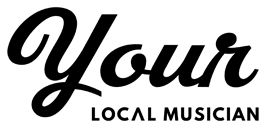1 Tip for Becoming a Better Music Producer
This article / tutorial will reveal one of the easiest tactics I use to improve my skills and become a better music producer.
What I’m going to share with you Is one of the essential skills I learned in college and have carried through to use time and time again In various situations.
Music producers of today and many generations before me have been guilty of jumping in head first with over excitement, In result never having a plan or further progressing in their music careers.
Does this sound like you? Admitting it is the first stage of moving forward.
So, what do I have to do, when am I collecting my grammy?
Hold up their buddy you’re doing it again, firstly 1 additional tip is slowing down, keeping your head clear and free of b*llsh*t is one of the best mental hacks you need to follow for getting more done and In quicker time.
Had an argument with the missus? Buy her some chocolate and keep your woman happy, pondering over pointless rubbish in the studio will do nothing for your creativity.
Learn
Or, as I like to call it, deconstructing elements.
Learning from those you admire can teach you an awful lot about your own music.
Before you do any production you have to learn what good production actually sounds like.
Deconstructing a mix in a high-fidelity playback environment, will elevate your ability to be able to hear every element in a song.
What you want to be listening for is what a producer includes in a beat. (Analyze what you hear)
Are there two leads? how much percussion is there?
List out all of the elements you can hear as well as their bar count and model these ideas in your own studio environment. (Modelling is not copying, NEVER COPY, modelling is simply using existing content to formulate your own ideas)
Here is an example of what to listen out for:
A rap or hip-hop mix typically has these tracks as a minimum:
1. The “track” or the “beat.” This is the instrumental backup. It might be downloaded from a website, created in the studio, purchased from a production house, or whatever.
2. The lead vocal (often doubled in spots).
3. Ad libs (“Hey”, etc.)
4. Effected ad libs (which are changed in pitch, pitch-corrected, stereoized, etc.)
5. Chorus and doubled chorus vocals panned left and right.
6. Sound effects (applause, gunshots, etc.)
Hopefully this gives you the right idea of what should have made it onto your list.
What NOT to do!
Never Listen through your iPhone, ear-buds or hi fi, it doesn’t matter how laser focused or dog like you think your hearing is, you should ALWAYS fulfil this process in a real studio environment.
Listening through your hi fi will add extra EQ and change your perception of what is actually there, Always listen to full-fidelity sources when carrying out this tactic,
This includes:
This does not include:
- MP3
- AAC, or other compressed file formats.
Have you ever tried this tactic? what did you learn from it?
Taking your time to train your ears like an army regiment workout will ensure your work flourishes.
*Remember without your ears you’re nothing, take care of them!







